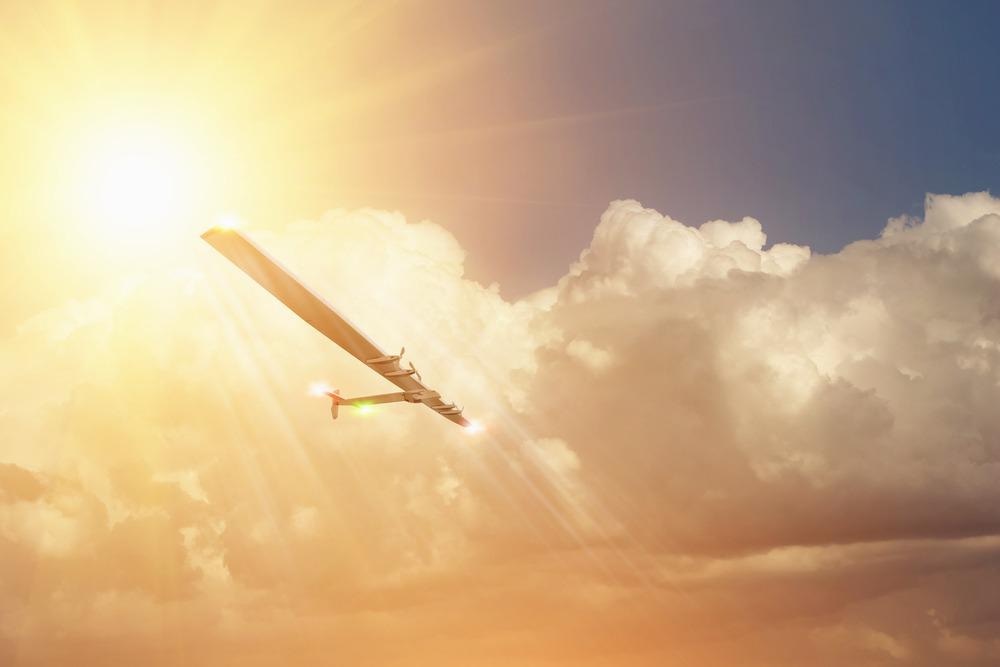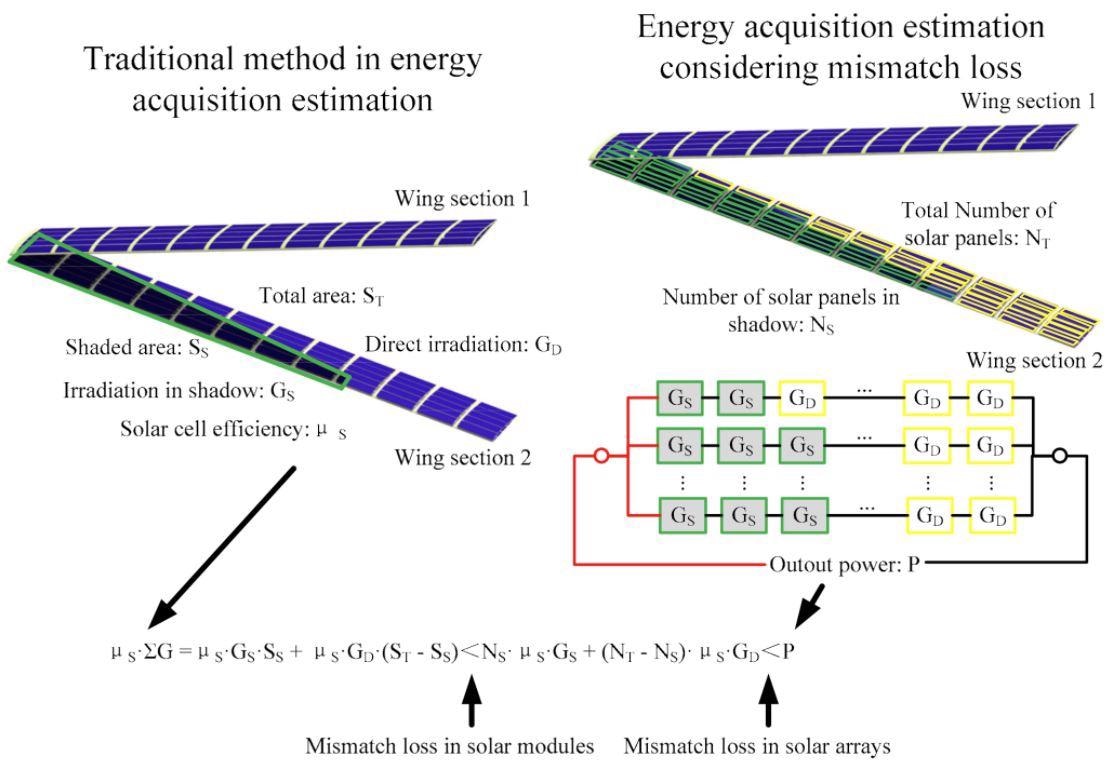In a recent study published in the journal Energies, researchers from China analyzed the effect of the unconventional configuration of the joint wings of solar-powered aircraft with an increased dihedral angle to improve energy acquisition by minimizing the power loss caused by the mismatch in the photovoltaic system.

Study: Energy Acquisition of Solar-Powered Joint-Wing Aircraft Considering Mismatch Power Loss. Image Credit: BokehStore/Shutterstock.com
They adopted a new method based on the simulation of an energy system to measure the mismatch power loss of the joint wings, which indicated a 4-15% deviation from the previously used estimation methods. Additionally, the new configuration showed an increase in sensitivity to the coupling between configuration and trajectory, and the mismatch power loss was found to be influenced by the curved upper surface, the severity of shading, and the circuit configuration.
Solar-Powered Joint-Wing Aircraft
Solar-powered aircraft are energy efficient and environmentally friendly solutions to present fossil fuel-based aircraft that perform long flights lasting for periodic days and nights up to several weeks. These aircraft have photovoltaic (PV) cell arrays installed on the upper side of their wings that convert solar energy into electricity during daytime, and the produced electricity is directly used by the propulsion system and other airborne equipment during both day and night.
Present solar-powered aircraft prototypes have the conventional configuration of straight wings with low wing load and high aspect ratio. However, they have disadvantages related to structure and flight range owing to low stiffness and strength. Moreover, in high-latitude areas, a small sun elevation means a large angle of incidence on PV cell arrays, thus low direct solar irradiance and reduced energy harvesting.
As a solution to the disadvantages of conventional wing designs, unconventional wing designs incorporate “v” -shape with increased dihedral angle (vertical angle of wings with horizontal axis), “Z or N”-shaped morphing wings at the back of each fixed primary wings, and active tracking of the sun to increase direct solar irradiance capturing.

Energy acquisition estimation of solar-powered aircraft. Image Credit: Ji, X et al., Energies
Furthermore, the traditional energy capturing measurement method assumes coplanar PV cells configuration, which underestimates the power loss caused by two types of mismatches. The first mismatch is due to the nonuniformity of irradiation on solar cells in the same solar module that leads to a mismatch in the net series connection and the second one is due to the nonuniformity of irradiation on solar modules in the same solar array due to partial shading or different orientations.
About the Study
In this study, researchers integrated several 24-hour flight simulation models viz. solar irradiance model, PV array model, maximum power point tracking (MPPT) and direct current (DC) model, and partial shading-based wing section model using Matlab/Simulink for accurate measurement of captured irradiance.
The solar irradiance model includes solar geometry and atmospheric parameter inputs such as the altitude above sea level, the longitude, the latitude, the local standard time, and the number of days from 1 January, whereas the output parameters of the model include the direct solar irradiance, the sun elevation angle, the solar azimuth angle, and the time of sunrise and sunset.
The PV array model considers three levels of input irradiations and output current-voltage namely, PV cell, PV module, and PV array in total cross-tied (TCT) and series-parallel (SP) configurations with or without bypass diode. Additionally, the MPPT model is based on a modified timed reset and stop oscillation situation to achieve optimized values.
Observations
The unconventional configuration indicated dissimilarity of energy acquisition between the simulation method and the efficiency method owing to the varying direction and wing dihedral. Both methods showed a 50% power loss gap between each other with an overall depression during the shading condition in the morning.
The inconsistency of irradiation input to two sections of PV modules on the curved upper surface of the wing resulted in a mismatch loss of 5.49%. The mismatch loss caused by partial shading was 0.11%, which was the difference between the total loss and the wing surface loss. The severity of partial shading was investigated using the overlapping of shading areas, which showed that the energy acquired in a day decreased and the power loss increased with the increase in the overlapping area.
Moreover, the PV array model revealed that the TCT configuration with bypass diodes acquired the highest energy, followed by SP with bypass diodes and SP without bypass diodes. Additionally, the flight along the optimal azimuths along the edge of shading acquired 3.4% more energy.
Conclusions
The researchers studied various factors affecting the energy acquisition model of unconventional solar-powered aircraft with joint-wing using an integrated simulation-based 24-hour flight model and compared it with the solar efficiency measurement-based method.
The simulations considered the effects of the severity of shading, the airfoil surface, and the circuit configuration. The absence of mismatch power loss in previous energy acquisition estimation gave 4-15% overestimation. Additionally, the TCT circuit configuration of PV cells with bypass diodes indicated the highest acquisition. Also, the optimized flight direction gained 3.4% more energy.
Reference
Ji, X., Sun, K., Guo, X., Sun, M., Energy Acquisition of Solar-Powered Joint-Wing Aircraft Considering Mismatch Power Loss. Energies, 2022, 15, 157. https://www.mdpi.com/1996-1073/15/1/157
Disclaimer: The views expressed here are those of the author expressed in their private capacity and do not necessarily represent the views of AZoM.com Limited T/A AZoNetwork the owner and operator of this website. This disclaimer forms part of the Terms and conditions of use of this website.